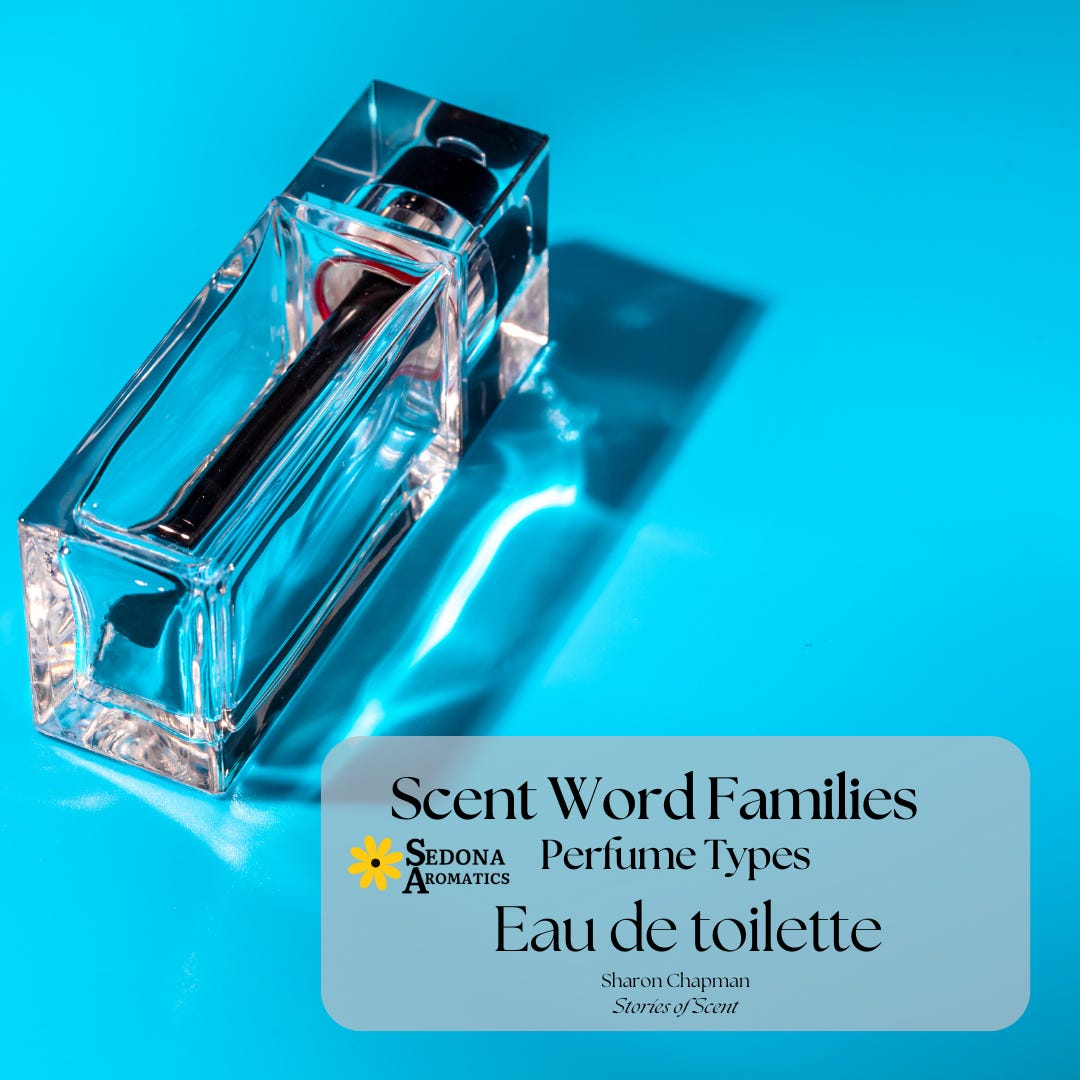Eau de Toilette: What Does it Mean in Perfumery?
Eau de toilette belongs to
Eau de toilette refers to an archaic term/action that isn’t in modern day use. The phrase translates in to English from French meaning “toilet water.” This isn’t a reference to the modern day lavatory but was something related to the act of dressing and personal grooming. Centuries ago, when running water wasn’t an option in homes, people used toilet waters to disguise bad odors.
Eau de toilette has about 4-8% dilution rate of botanical extracts and/or oils. It is closely related to eau de Cologne, but has a higher dilution rate and contains more than just citrus oils. The base of both “waters” is the same: Alcohol (and water).
Over the years, history has merged the beginnings of eau de toilette with that of eau de Cologne and there have been many “variations” on this product by different countries. Popular plants/oils used in eau de toilette include:
violet
lilac
lavender
geranium.
You might find names such as rose water or lavender water used which could actually be an eau de toilette. Plants such as lilac and violet are difficult to extract for oils, so it’s possible that the plant was tinctured in alcohol vs oils added to the base (1).
Understanding perfume types is probably one of the first steps that you need to decipher when deciding which type of fragrance that you’d like to make.
Please drop a heart below if you like this article as it increases visibility and allows more people to see it and learn! Thank you :)
What did you learn from this article? Drop me your thoughts in the comments below.
References:
Author’s observation based on experience
“Perfume follows you; it chases you and lingers behind you. It’s a reference mark. Perfume makes silence talk.”
Sonia Rykiel (1930-2016), French fashion designer and writer






